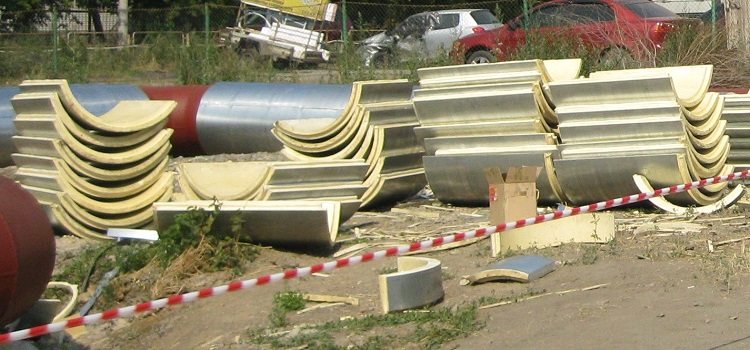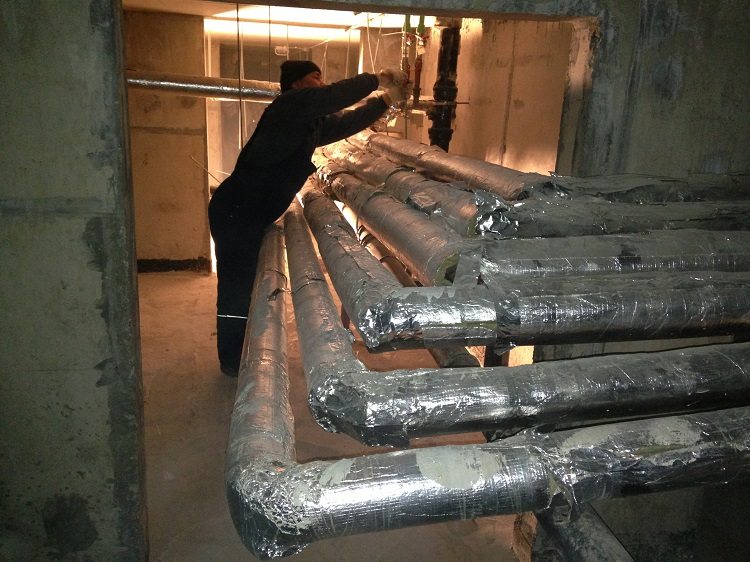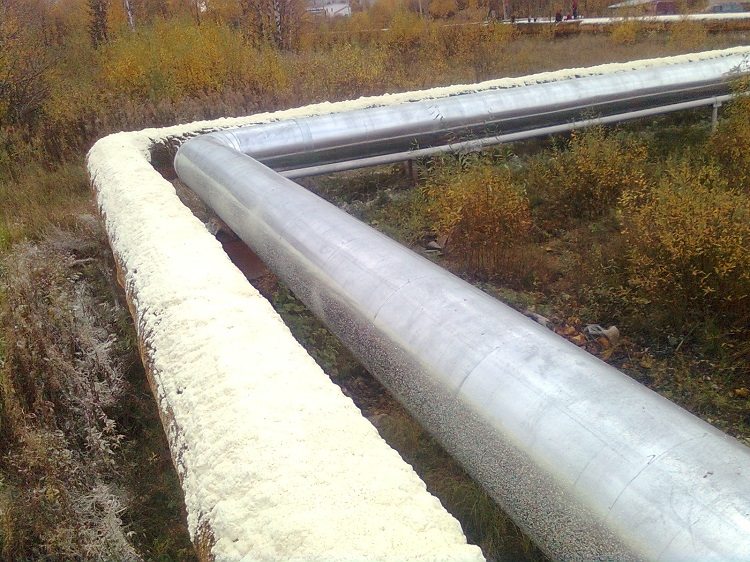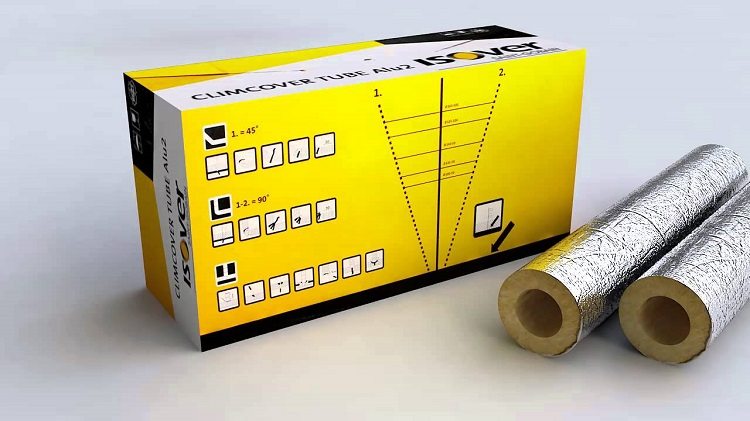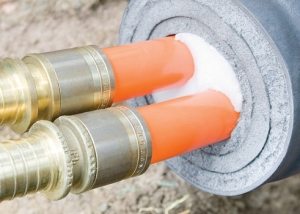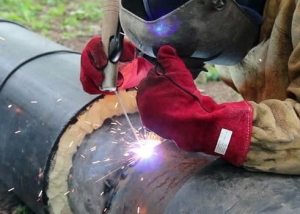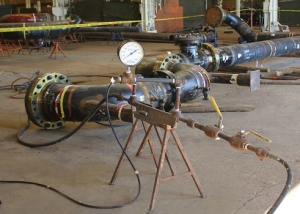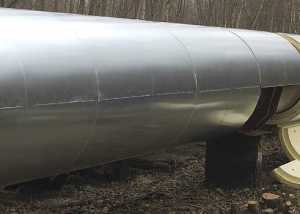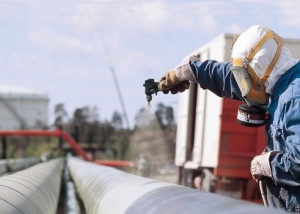Quite often, it becomes necessary to isolate communications. If the place where the boiler room is located in the house is not heated, then when the coolant moves through them to the premises, about 20% of the heat is lost. To maximize system efficiency and reduce heat loss, insulation of heating pipes is used. It can be done with your own hands using various materials - mineral wool, polyurethane foam (PUF), liquid insulation, penofol.
Content
- 1 Why is it necessary to insulate pipes for heating
- 2 How to insulate a heating pipe
- 3 Basic materials for pipeline insulation
- 4 The placement of heating pipes in polyurethane foam insulation
- 5 Foil insulation for heating pipes
- 6 Options foil insulation
- 7 Important points of using insulation
- 8 Do-it-yourself insulation installation
Why is it necessary to insulate pipes for heating
The rational use of thermal energy involves heating only those rooms in the apartment or house that need it. If there is no insulation for the heating pipes, then the heat in non-residential premises, for example, in the attic or in the basement, is dissipated without much benefit to the consumer. This reduces overall system performance and increases energy costs.
Insulation for outdoor heating pipes also reduces the risk of freezing of the coolant during a sharp drop in temperature. Although freezing of the system is unlikely, however, plugs may form. therefore thermal insulation of the heating pipelinelocated outside the building is a mandatory and important condition for the installation of external and internal routes.
Correctly selected characteristics and insulation thickness of the heating pipe can protect network elements from condensation, mechanical damage and corrosion.
How to insulate a heating pipe
There are many thermal insulation materials for heating pipes. The choice of the necessary is influenced by the room parameters and the technical conditions of the heating network. Key criteria include:
- the location of pipelines requiring insulation;
- system coolant temperature;
- characteristics of pipelines;
- technical parameters of materials for insulation of heating pipes.
The main operational parameters possessed by the insulating material are:
- thermal conductivity;
- moisture resistance;
- heat resistance and fire resistance;
- resistance to the influence of microorganisms and decay;
- sufficient thickness;
- installation cost and manufacturability.
The less thermal conductivity a material possesses for insulating heating pipes with its own hands, the better its thermal insulation properties. Moisture resistance affects the quality of protection of metal (steel) pipelines from corrosion and condensate.
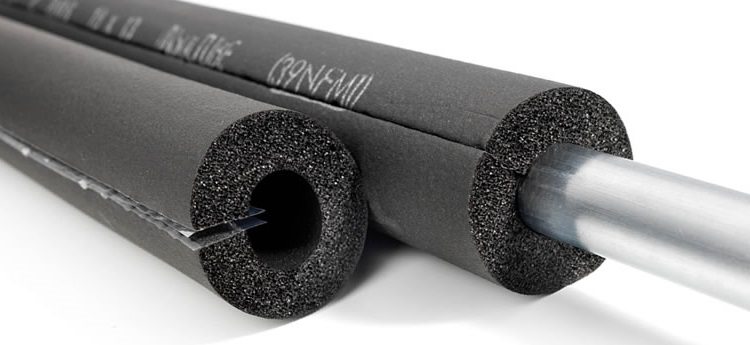
It is most convenient to insulate pipes with an already finished “shell”, it is made from a variety of materials
Note! The fire resistance parameters of thermal insulation for heating pipes must fully comply with the established fire safety standards in heated structures.
The insulation thickness is calculated for each case according to complex formulas.
Basic materials for pipeline insulation
To get the maximum effect, it is important to clearly determine what to insulate the heating pipes in the basement, apartment or in the attic. Allocate soft rolled, solid piece and liquid heat-insulating material. When making a choice, it is necessary to take into account the diameter of the communications in order to correctly choose the size of a piece of insulation.
All types of insulation on the heating pipes perform their functions due to the air contained inside and differ only in the ease of installation. Insulation "shell" - one of the easiest ways of insulation. It is available in the form of half cylinders. Installation can be done with your own hands by connecting the halves.
The shell provides high-quality insulation of heating pipes in the basement (in the attic) by means of grooves in the halves of the cylinder. The most popular and practical pipe insulation materials are expanded polystyrene, fiberglass and mineral wool, polyurethane foam, foam insulation, foamed polyethylene, foamed foamed foam.
The placement of heating pipes in polyurethane foam insulation
Heater for heating pipes from polyurethane foam is of two types:
- sprayed;
- tough.
The first type (mounting foam) is applicable to isolate small sections of pipes when absolutely necessary. Rigid insulation for heating pipes made of polyurethane foam is used for individual circuits. This material is lightweight, durable and has a low coefficient of thermal conductivity.
Note! One of the advantages of PPU is its high water repellent property.
The material is non-toxic, environmentally friendly and chemically resistant. Its installation is made around communications on the type of "shell". Insulation for heating pipes is crimped around them, fixed with wire, cable ties or brackets. It is able to withstand temperatures up to +150 degrees.
For isolation of the pipeline PPU spraying can be used. This requires a 4 atmospheric compensator and special equipment. PPU is firmly connected to the surface of the pipe, forming a solid mass. Such material does not tolerate the action of sunlight, so it is necessary to use a protective winding or aluminum foil. The application of PPU coating must be carried out in protective clothing.
Foil insulation for heating pipes
Solving the issue of how to insulate the heating pipe, it is better to choose a foil version. Effective insulation of heating pipes is not only the conservation of heat, but also its reflection. For these purposes, materials with aluminum foil are used.
The reflective properties of polished foil are very high, which allows you to save the temperature of the coolant and keep the efficiency of the heating system to a maximum. The heat flow that comes from the heating pipe is reflected back. In addition, the insulation for heating pipes with foil has the properties of hydro- and vapor barrier, and also does not allow cold outside.
During manufacture, the main material is applied to the foil layer - mineral wool, expanded polyethylene, expanded polystyrene. Such insulation for heating pipes in an apartment (in the attic, in the basement) is produced in the form of plates, rolls, linen, mats, shells, the thickness of which is different.
Foil material can be used at air temperatures from -60 to +150 ° C, so it is well suited for insulation of external routes. Its vapor permeability is 0.001%, and its water absorption is 0.74% in 24 hours. An important indicator is the high thermal conductivity of the foil, so it cannot be used separately.
Options foil insulation
The easiest way to warm the heating pipes in the basement is to use mineral wool covered with a layer of foil.The thickness of the cotton wool is up to 50 mm, the thickness of the reflective layer is 10-30 microns.
Before insulating heating pipes in the attic (in the basement), it is necessary to study in detail the conditions for using suitable materials. The foil used with foamed polyethylene is more fragile and can be deformed by external influences. The use of foil with foam allows to significantly increase its strength characteristics.
Note! Basalt thermal insulation is similar in characteristics to mineral wool, however, it is heavier because its density is greater.
Self-adhesive insulation is very convenient to use. If the foil is damaged, aluminum tape can be used.
Polyethylene foam and lavsan film with foil are capable of transmitting infrared (thermal) radiation. For this reason, it is necessary to choose a film that has a significant thickness of the foil layer.
Important points of using insulation
When purchasing roll insulation for insulation of heating pipes in the attic or in the basement, you need to make sure that it is applicable specifically for communications. If the material is rigid and has the shape of semicircles, then it is intended for pipes of a specific diameter.
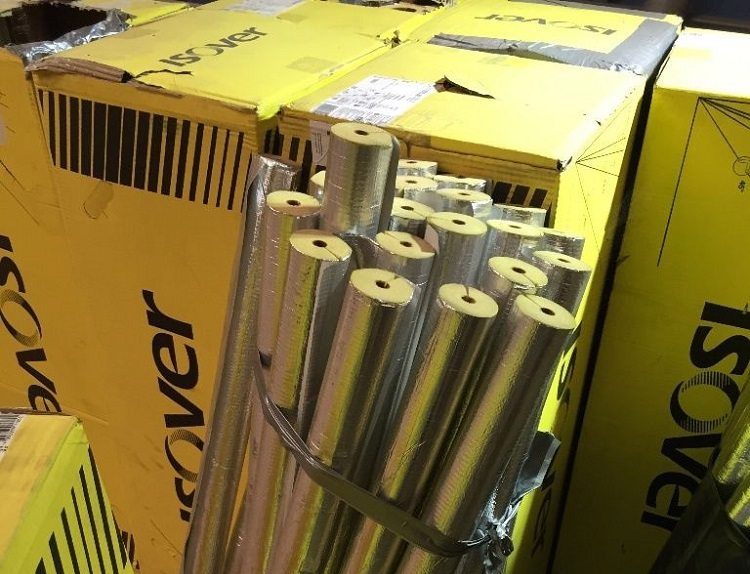
When buying a finished “shell”, you need to know the diameter of the pipes to be insulated, because the rigid insulating material also has certain dimensions
A distance of 25 mm must be maintained between the aluminum foil and the wall. The price of the thermal insulation coating is affected by the base material and the thickness of the reflective layer. There is also a significant difference between aluminum foil and aluminum spraying. In the latter case, the operation of the heat insulator will be less effective, and the reflectivity is small.
It is not necessary to purchase ready-made foil material, you can wrap the insulation layer for pipes in the basement or in the attic with foil yourself. Such insulation can be produced either in the form of hollow tubes, or in rolls. Foil is laid out with the front side out. Between it and the pipeline there must be a gap of 10-20 mm.
Do-it-yourself insulation installation
Consider how to properly insulate a heating pipe using the example of a heat-insulating shell made of polystyrene foam. First, the half-cylinders of the shell are put on the pipe, providing displacement relative to each other, which is required for overlap. Its size can be from 10 to 20 cm.
The halves to be worn must be fixed with tape in advance. In the case of the use of protective material located on the surface, its fastening is carried out after completion of work.
Note! For a more reliable adjacency of the shell, the joints are glued with tape.
If thermal insulation for heating pipes is used to warm their turns, as well as corners or system nodes, it is better to use shaped shells. There are no special requirements for them.
How to insulate the heating pipe depends on the specific features and conditions of the location of the tracks (in the basement), in the attic, in the apartment). The choice of materials on the modern market is very large, so you can choose a heater for any occasion.
